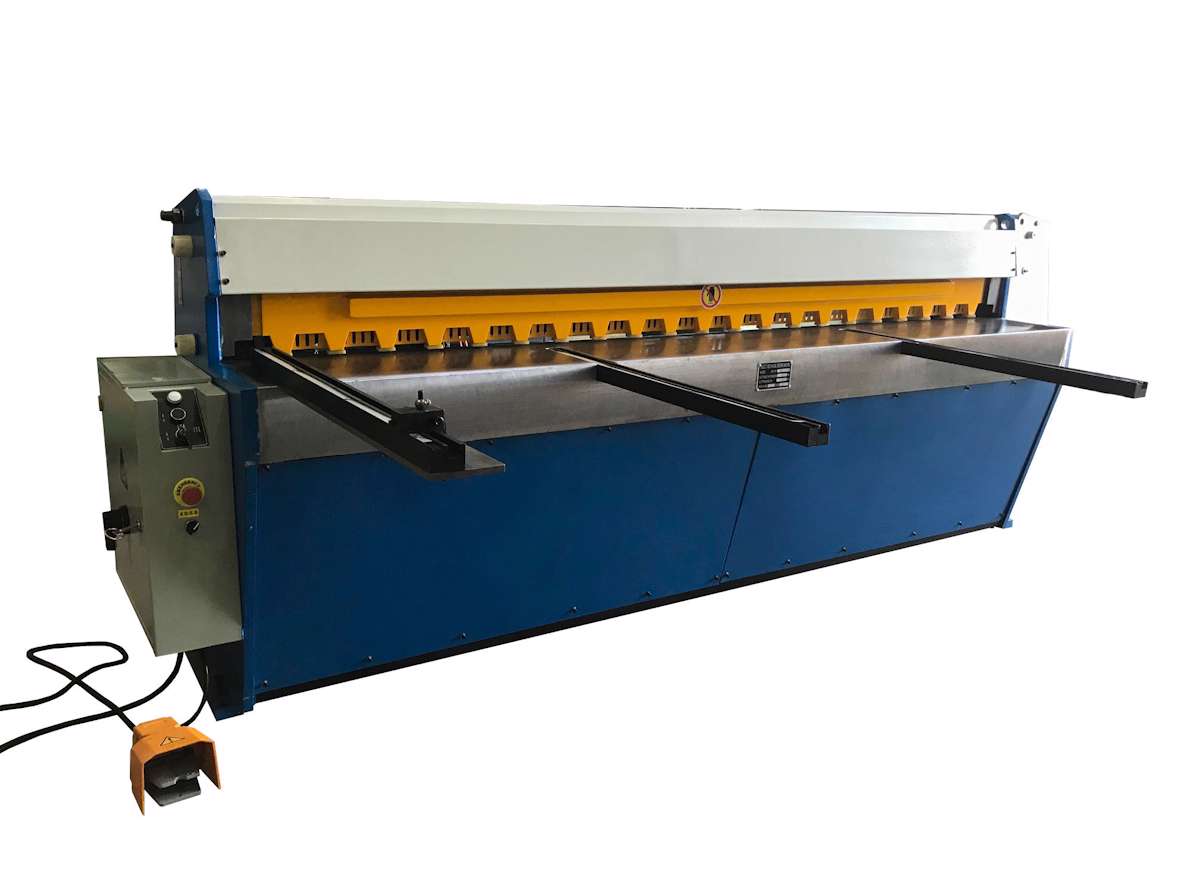When it comes to precision cutting in metal fabrication, selecting the right guillotine machine is crucial for operational efficiency and product quality. Among the various types of guillotine machines available, hydraulic and mechanical guillotines stand out as two of the most widely used in industrial applications. Understanding the differences between hydraulic guillotine machines and mechanical guillotine machines, as well as their advantages and disadvantages, can help you make an informed decision about which fits your needs best.
Understanding Guillotine Machines
A guillotine machine is a cutting tool used for shearing sheet metal, plastics, and other materials in a straight line. It works by applying a large shearing force through a blade that moves downwards against a fixed blade, slicing the material cleanly. Guillotine machines come in various forms, including manual, mechanical, hydraulic, and CNC guillotines. Each offers different levels of automation, power, and precision.
What Is a Hydraulic Guillotine Machine?
A hydraulic guillotine machine uses hydraulic cylinders to power the cutting blade’s movement. The hydraulic system generates high pressure to push the blade downwards with a controlled, consistent force. This system allows for smoother, quieter operation and greater control over cutting pressure, making it ideal for thicker, tougher materials.
Key advantages of hydraulic guillotine machines include:
- High Cutting Power: Hydraulic systems can generate immense force, enabling the cutting of thick metal sheets with ease.
- Smooth and Controlled Operation: The blade speed and pressure are adjustable, reducing material deformation and improving cut quality.
- Versatility: Suitable for a wide range of materials including steel, aluminum, and composites.
- Durability and Longevity: Fewer mechanical parts mean less wear and tear.
Hydraulic guillotine machines are common in industries where precise, high-volume metal cutting is required. Many manufacturers, like Accurl guillotines, offer advanced hydraulic models with CNC integration for automated, high-precision cutting.
What Is a Mechanical Guillotine Machine?
Mechanical guillotine machines, on the other hand, use a flywheel and clutch mechanism to drive the blade. When engaged, the flywheel stores energy and releases it to the blade, creating a rapid shearing motion. Mechanical guillotines often have faster cutting speeds compared to hydraulic machines, but the force applied is less adjustable.
Key benefits of mechanical guillotine machines include:
- High Speed Cutting: Ideal for applications requiring fast production rates.
- Simplicity: Fewer hydraulic components mean simpler maintenance.
- Cost-Effective: Generally less expensive upfront compared to hydraulic models.
However, mechanical guillotine machines can be noisier and less gentle on the material, potentially causing slight deformations in certain cases. They are often preferred for thinner materials where speed is more critical than the finesse of the cut.
CNC Guillotine Machines: Bringing Automation into the Mix
CNC (Computer Numerical Control) guillotine machines represent a leap forward in guillotine technology by integrating computerized control into either hydraulic or mechanical guillotines. CNC guillotine machines automate blade positioning, cutting length, and pressure adjustments, delivering unmatched precision and repeatability.
Many modern hydraulic guillotine machines come equipped with CNC controls, making them highly flexible for complex cutting tasks. CNC guillotines also reduce the need for skilled operators, improve safety, and enhance throughput.
Comparing Hydraulic vs Mechanical Guillotine Machines
| Feature | Hydraulic Guillotine Machine | Mechanical Guillotine Machine |
|---|---|---|
| Cutting Force | High, adjustable, consistent | Moderate, less adjustable |
| Suitable Material Thickness | Thick metals and tough materials | Thin to medium sheets |
| Cutting Speed | Moderate, controlled | High speed |
| Maintenance | Requires hydraulic system upkeep | Simpler mechanical maintenance |
| Noise Level | Quieter | Noisier |
| Operation Control | Smooth, precise | Fast but less precise |
| Cost | Higher initial investment | Lower upfront cost |
| Automation | Often integrated with CNC | Available with CNC but less common |
Which Guillotine Machine Fits Your Needs?
The choice between hydraulic and mechanical guillotine machines largely depends on your specific application requirements:
- For cutting thick, hard metals: Hydraulic guillotine machines excel due to their powerful and adjustable cutting force.
- For high-speed production of thin sheets: Mechanical guillotines offer the speed and efficiency needed.
- For complex, repetitive cuts requiring precision: CNC hydraulic guillotines, such as those offered by Accurl guillotines, provide automation and accuracy.
- For budget-conscious operations: Mechanical guillotine machines usually have a lower upfront cost.
Why Consider Accurl Guillotines?
Accurl guillotines are renowned for their robust construction, reliability, and state-of-the-art hydraulic technology. Many of their hydraulic guillotine machines come equipped with CNC controls, offering precision, flexibility, and efficiency for diverse metal cutting needs. Whether you need a basic hydraulic guillotine or an advanced CNC guillotine machine, Accurl provides options tailored to various industrial applications.
Final Thoughts
Both hydraulic and mechanical guillotine machines hold unique advantages and cater to different cutting requirements. Hydraulic guillotine machines are best suited for operations demanding power, precision, and versatility, especially when integrated with CNC systems. Mechanical guillotines serve well in high-speed, cost-effective cutting of lighter materials.
Understanding your production needs, material types, and budget will guide you to the perfect guillotine machine. Whether you choose a hydraulic guillotine, a CNC guillotine, or a mechanical model, investing in quality equipment from trusted manufacturers like Accurl ensures reliable performance and long-term value.


